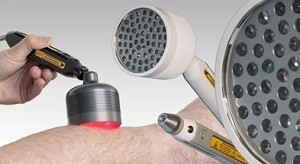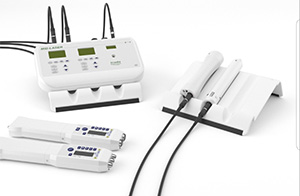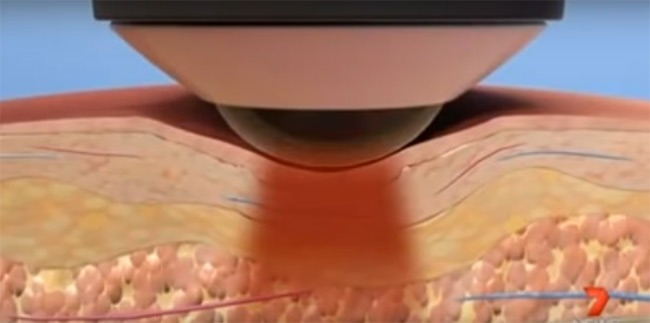Laser Therapy

Morvarid Sadeghian, Senior General Physiotherapist, has been clinically using photobiostimulation (low level lasers) since 2003. As an physiotherapist, Morvarid is highly experienced in treating a myriad of pain conditions, both acute and chronic. She combines her extensive knowledge and experience of physiotherapy and photobiostimulation to provide patients with informed and professional care.
Dr. Farshad Ghazanfari, Consultant & Musculoskeletal Physician, has been researching and working with laser for the last decade.
What is Photobiostimulation (also known as Cold Laser Therapy)?

Photobiostimulation or “cold laser” is the application of specific wavelengths of laser and LED light to the human body to reduce pain and promote tissue healing. The low level lasers used in this therapy are applied to the skin, the therapy is completely non-invasive and painless. It is suitable for people of all ages.
Low level lasers by virtue of their output and design cannot burn or cut, unlike lasers used in surgery and hence they are also known as “cold lasers”. In regard to pain, photobiostimulation relieves pain by affecting pain receptors and reducing inflammation and swelling in the painful area. Photobiostimulation improves blood circulation, reduces inflammation and bio stimulates the body’s cells, which then kick starts the healing process.

We use wide spectrum wavelengths including 640 nm, 810 nm and 904 nm to optimise the care of our complex arthritic, low back and neck pain and chronic pain syndromes.
Photobiostimulation has over 30 years of published evidence-based research behind it. There have been hundreds of randomised clinical trials and studies, and several of these studies have been published in some of the world’s top scientific journals like Nature, the British Medical Journal and the Lancet.
The clinical benefits of photobiostimulation are:
- Pain relief
- Anti-inflammatory
- Improves circulation, therefore delivering nutrients to injured tissue
- Tissue repair
- Virtually no side effects
This makes photobiostimulation useful in a broad range of pain conditions, musculo-skeletal conditions and conditions that require tissue healing such as:
- Neck, mid back and lower back pain
- Arthritic joint pain
- Tendonitis, like tennis and golfers elbow
- Bursitis
- Sciatica
- Frozen shoulder
- Carpal Tunnel Syndrome
- Rotator Cuff pain
- Fibromyalgia
- Migraine
- Plantar fasciitis (foot and heel pain)
- Neuralgia (nerve pain) including facial or trigeminal neuralgia
- Sports injuries, sprains, strains and hamstring injury
- Achilles tendon pain
- TMJ disfunction (jaw pain)
- Sinusitis and many more conditions
Some photobiostimulation science
When it comes to photobiostimulation, the wavelengths of light used the most are within the red and near infrared part of the light spectrum. These wavelengths as mentioned previously are known to have the following beneficial effects on human tissue: anti inflammatory, improving circulation, promoting tissue healing and reducing pain. As you can see from the diagram below visible light is only a small band within the entire electromagnetic spectrum. Light can penetrate the skin and lower tissue layers. Simply speaking the light is more deeply absorbed as we move from blue light to red light and then the invisible near infrared.
This image represents how the red light and near infrared light penetrates the human tissue.

Please remember photobiostimulation is completely painless.
On top of this, mitochondria – the tiny organelles that produce energy (ATP) in the cells are bio stimulated by the red and near infrared light and subsequently overall cell and tissue functioning is enhanced.
Here are some recently published scientific articles on photobiostimulation (lower level laser therapy) if you’re keen to learn more.
Efficacy Of Low-Level Laser Therapy In The Treatment Of Neck Pain
Information on consultations: Your initial consultation will be 45 minutes and will consist of a thorough assessment of your condition, medical history and photobiostimulation. Follow up sessions are 15 minutes.


